-
 bitcoin
bitcoin $114684.631706 USD
-0.87% -
 ethereum
ethereum $4228.677447 USD
1.58% -
 bnb
bnb $1294.880693 USD
-1.16% -
 tether
tether $1.000819 USD
-0.02% -
 xrp
xrp $2.605138 USD
2.79% -
 solana
solana $209.908690 USD
5.89% -
 usd-coin
usd-coin $0.999903 USD
-0.03% -
 dogecoin
dogecoin $0.213423 USD
2.93% -
 tron
tron $0.322721 USD
-0.10% -
 cardano
cardano $0.727247 USD
3.66% -
 hyperliquid
hyperliquid $42.339456 USD
6.05% -
 chainlink
chainlink $19.910811 USD
5.16% -
 ethena-usde
ethena-usde $1.000557 USD
0.00% -
 stellar
stellar $0.349734 USD
2.69% -
 bitcoin-cash
bitcoin-cash $543.848687 USD
-0.21%
What is the principle of BOLL? What concept in statistics is it based on?
Bollinger Bands use standard deviation to gauge crypto price volatility, with bands widening during high volatility and narrowing when stable.
May 22, 2025 at 04:01 am
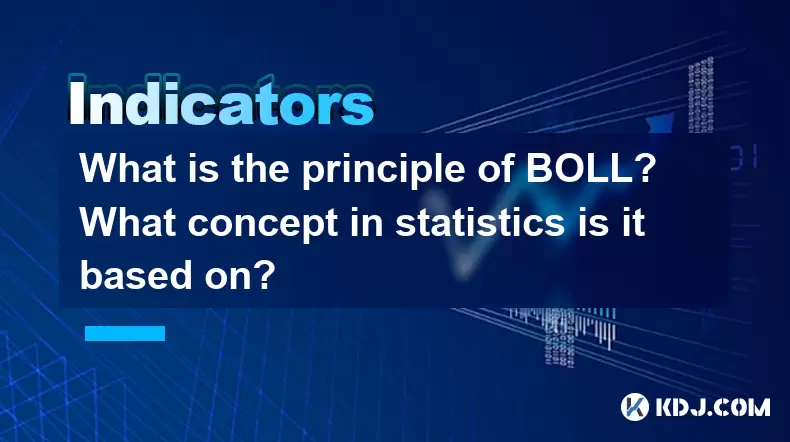
The Bollinger Bands (BOLL) indicator is a widely used technical analysis tool in the cryptocurrency trading community. Developed by John Bollinger in the 1980s, BOLL is designed to provide insights into market volatility and potential price movements. The principle of BOLL revolves around the concept of standard deviation from statistics, which measures the dispersion of a set of values from their mean.
Understanding the Components of Bollinger Bands
Bollinger Bands consist of three lines plotted on a price chart: the middle band, the upper band, and the lower band.
The Middle Band is typically a simple moving average (SMA) of the asset's price over a specified period, often 20 days. This line represents the average price and serves as a baseline for the other bands.
The Upper Band is calculated by adding two standard deviations to the middle band. This line indicates the upper limit of the normal price range.
The Lower Band is calculated by subtracting two standard deviations from the middle band. This line represents the lower limit of the normal price range.
The Role of Standard Deviation in Bollinger Bands
The concept of standard deviation is fundamental to the operation of Bollinger Bands. Standard deviation is a statistical measure that quantifies the amount of variation or dispersion in a set of values. In the context of BOLL, standard deviation is used to assess the volatility of the asset's price.
When the price is stable, the standard deviation is low, resulting in narrower bands. This indicates that the price is less likely to deviate significantly from the moving average.
When the price is volatile, the standard deviation is high, leading to wider bands. This suggests that the price is more likely to experience significant fluctuations.
Interpreting Bollinger Bands in Cryptocurrency Trading
Traders use Bollinger Bands to identify potential buy and sell signals, as well as to gauge market volatility. Here are some common interpretations:
Price Touching the Upper Band: When the price touches or exceeds the upper band, it may indicate that the asset is overbought, suggesting a potential sell signal.
Price Touching the Lower Band: Conversely, when the price touches or falls below the lower band, it may indicate that the asset is oversold, suggesting a potential buy signal.
Narrowing Bands: When the bands converge, it suggests that the market is experiencing low volatility. This could precede a significant price movement, as the market may be consolidating before a breakout.
Widening Bands: When the bands diverge, it indicates increasing volatility. Traders might anticipate larger price swings and adjust their strategies accordingly.
Practical Application of Bollinger Bands in Crypto Trading
To effectively use Bollinger Bands in cryptocurrency trading, traders follow a systematic approach. Here’s a detailed walkthrough of how to apply BOLL:
Select a Time Frame: Choose an appropriate time frame for your trading strategy, such as 15 minutes, 1 hour, or 1 day.
Plot the Bollinger Bands: Use a charting platform to plot the Bollinger Bands on your chosen time frame. Ensure the middle band is set to a 20-day SMA, and the upper and lower bands are set to two standard deviations.
Monitor Price Movements: Observe how the price interacts with the bands. Pay attention to instances where the price touches or crosses the bands.
Identify Trading Signals: Look for potential buy and sell signals based on the price's interaction with the bands. For example, if the price touches the lower band and starts to rise, it could be a buy signal. Conversely, if the price touches the upper band and begins to fall, it might be a sell signal.
Confirm with Other Indicators: To increase the reliability of your signals, confirm them with other technical indicators, such as the Relative Strength Index (RSI) or Moving Average Convergence Divergence (MACD).
Execute Trades: Based on your analysis, execute trades according to your strategy. Always use proper risk management techniques, such as setting stop-loss orders to limit potential losses.
Limitations and Considerations
While Bollinger Bands can be a powerful tool, it's important to be aware of their limitations and use them in conjunction with other analysis methods.
False Signals: Bollinger Bands can sometimes generate false signals, especially in highly volatile markets. It's crucial to use additional indicators to confirm signals.
Market Context: The effectiveness of Bollinger Bands can vary depending on the overall market context. For example, during a strong bullish or bearish trend, the bands may remain consistently wide or narrow, making it challenging to identify meaningful signals.
Parameter Adjustments: The default settings of Bollinger Bands (20-day SMA and two standard deviations) may not be optimal for all assets or time frames. Traders often experiment with different parameters to find the most effective settings for their specific trading strategies.
Frequently Asked Questions
Q: Can Bollinger Bands be used for all cryptocurrencies?A: Yes, Bollinger Bands can be applied to any cryptocurrency. However, the effectiveness may vary depending on the liquidity and volatility of the specific asset. Highly volatile cryptocurrencies may require different parameter settings to account for their price behavior.
Q: How do Bollinger Bands differ from other volatility indicators?A: Bollinger Bands are unique because they combine a moving average with standard deviation to create a dynamic range around the price. Other volatility indicators, such as the Average True Range (ATR), focus solely on measuring volatility without providing a visual range around the price. This makes Bollinger Bands particularly useful for identifying potential price reversals and breakouts.
Q: Can Bollinger Bands predict future price movements?A: Bollinger Bands do not predict future price movements with certainty. They provide insights into potential price behavior based on historical data and current market conditions. Traders use them as one part of a broader analysis to make informed trading decisions.
Q: Are there any specific strategies that work well with Bollinger Bands?A: Yes, several strategies can be effective when used with Bollinger Bands. One popular approach is the Bollinger Band Squeeze, which involves entering trades when the bands converge, indicating low volatility, and exiting when the bands diverge, signaling increased volatility. Another strategy is the Bollinger Band Breakout, where traders enter positions when the price breaks out of the upper or lower band.
Disclaimer:info@kdj.com
The information provided is not trading advice. kdj.com does not assume any responsibility for any investments made based on the information provided in this article. Cryptocurrencies are highly volatile and it is highly recommended that you invest with caution after thorough research!
If you believe that the content used on this website infringes your copyright, please contact us immediately (info@kdj.com) and we will delete it promptly.
- XRP Price Prediction: Weekend Rollercoaster or Rally?
- 2025-10-12 08:45:16
- Bittensor (TAO): Super Bullish Signals Point to Potential 2x Rally
- 2025-10-11 10:25:12
- Silver Price Correction: Navigating the Dip & Identifying Key SEO Keywords
- 2025-10-11 10:25:12
- Decoding Crypto Trends: Bittensor's Bull Run, Cardano's Dip, and LivLive's Presale Buzz in 'Uptober 2025'
- 2025-10-12 08:45:16
- MoonBull: The Crypto Meme Coin Promising 1000x Gains?
- 2025-10-11 10:30:01
- Crypto Payroll Revolution: Stablecoins, Altcoins, and the Future of Salary Payments
- 2025-10-11 10:30:01
Related knowledge
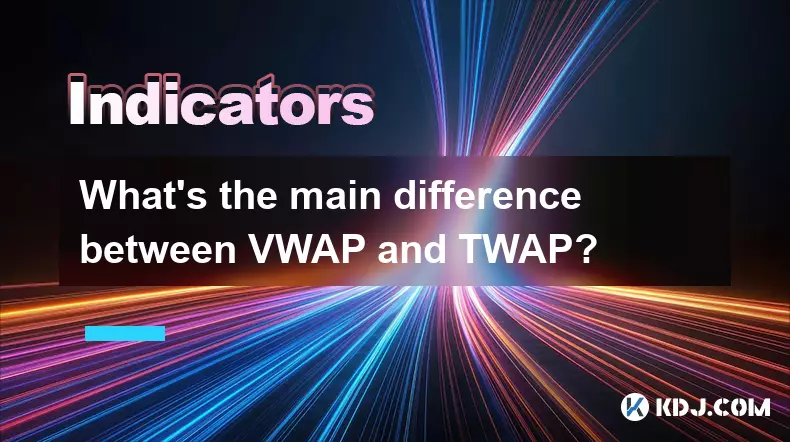
What's the main difference between VWAP and TWAP?
Oct 12,2025 at 11:54am
Understanding VWAP and Its Role in Crypto Trading1. Volume Weighted Average Price (VWAP) is a trading benchmark that calculates the average price of a...
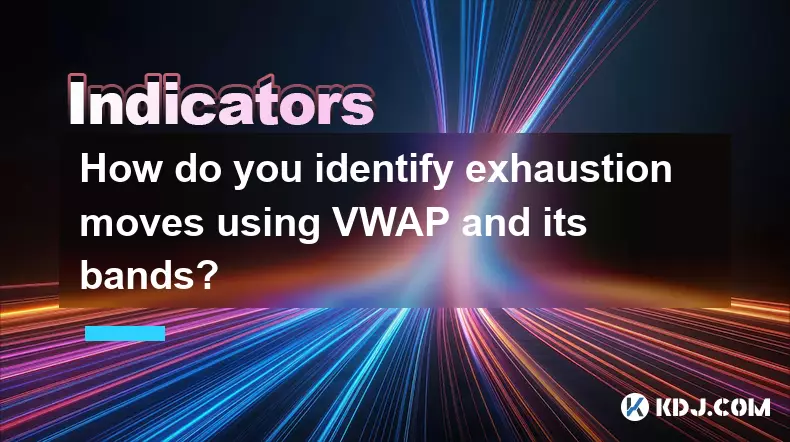
How do you identify exhaustion moves using VWAP and its bands?
Oct 12,2025 at 08:00am
Understanding the Role of Decentralized Exchanges in Crypto Trading1. Decentralized exchanges (DEXs) operate without a central authority, allowing use...
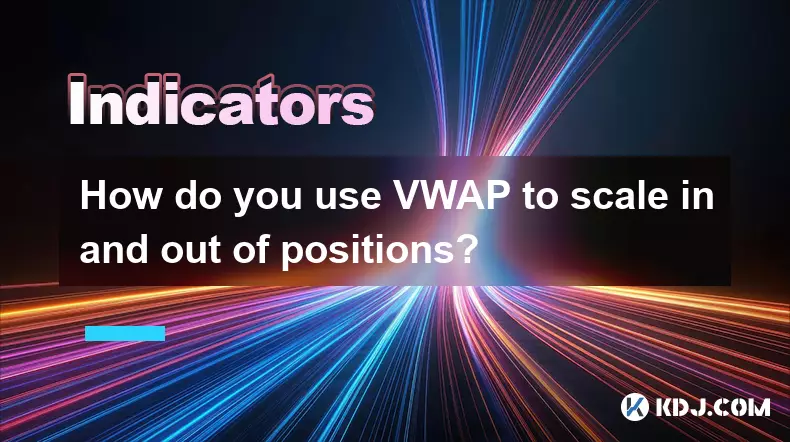
How do you use VWAP to scale in and out of positions?
Oct 14,2025 at 02:19am
Understanding VWAP as a Dynamic Benchmark1. The Volume Weighted Average Price (VWAP) is not just an indicator—it functions as a dynamic benchmark that...
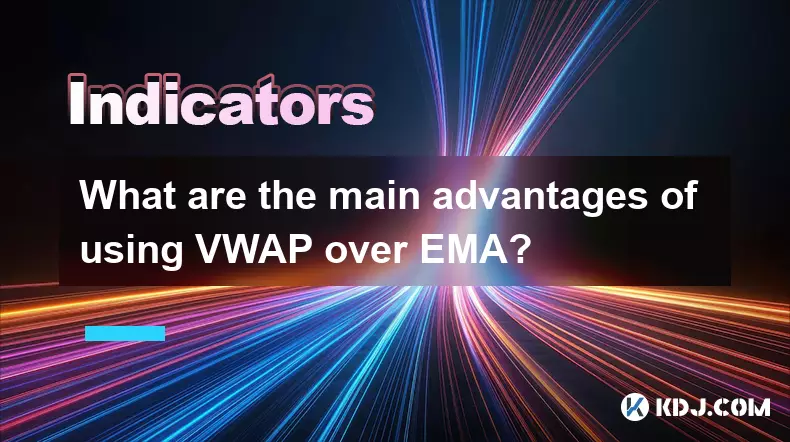
What are the main advantages of using VWAP over EMA?
Oct 11,2025 at 02:18am
Main Advantages of Using VWAP Over EMA1. Volume-Weighted Average Price (VWAP) incorporates trading volume into its calculation, offering a more accura...
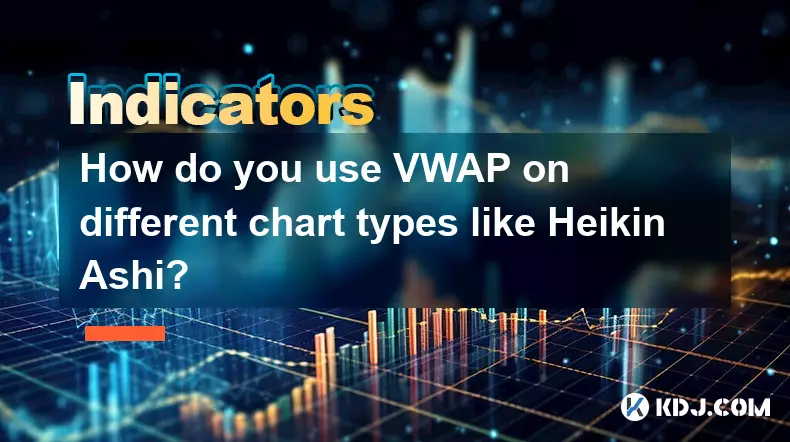
How do you use VWAP on different chart types like Heikin Ashi?
Oct 11,2025 at 05:01pm
Understanding VWAP in the Context of Heikin Ashi Charts1. The Volume Weighted Average Price (VWAP) is a powerful analytical tool commonly used by trad...
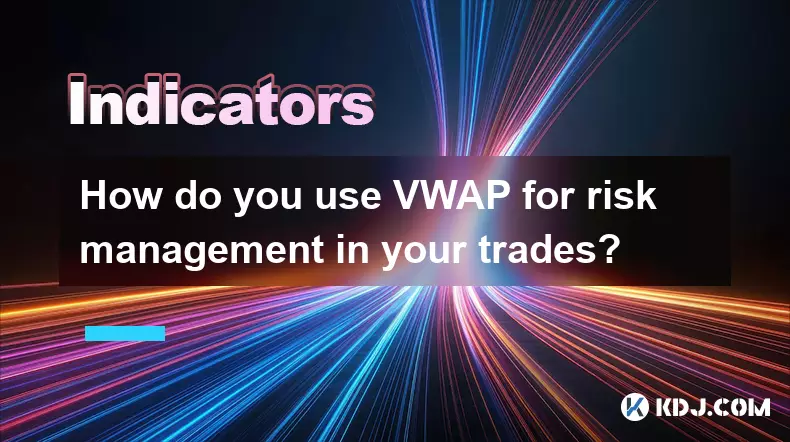
How do you use VWAP for risk management in your trades?
Oct 11,2025 at 02:54am
Understanding VWAP as a Dynamic Benchmark1. The Volume Weighted Average Price (VWAP) serves as a crucial reference point in intraday trading by reflec...

What's the main difference between VWAP and TWAP?
Oct 12,2025 at 11:54am
Understanding VWAP and Its Role in Crypto Trading1. Volume Weighted Average Price (VWAP) is a trading benchmark that calculates the average price of a...

How do you identify exhaustion moves using VWAP and its bands?
Oct 12,2025 at 08:00am
Understanding the Role of Decentralized Exchanges in Crypto Trading1. Decentralized exchanges (DEXs) operate without a central authority, allowing use...

How do you use VWAP to scale in and out of positions?
Oct 14,2025 at 02:19am
Understanding VWAP as a Dynamic Benchmark1. The Volume Weighted Average Price (VWAP) is not just an indicator—it functions as a dynamic benchmark that...

What are the main advantages of using VWAP over EMA?
Oct 11,2025 at 02:18am
Main Advantages of Using VWAP Over EMA1. Volume-Weighted Average Price (VWAP) incorporates trading volume into its calculation, offering a more accura...

How do you use VWAP on different chart types like Heikin Ashi?
Oct 11,2025 at 05:01pm
Understanding VWAP in the Context of Heikin Ashi Charts1. The Volume Weighted Average Price (VWAP) is a powerful analytical tool commonly used by trad...

How do you use VWAP for risk management in your trades?
Oct 11,2025 at 02:54am
Understanding VWAP as a Dynamic Benchmark1. The Volume Weighted Average Price (VWAP) serves as a crucial reference point in intraday trading by reflec...
See all articles










































































